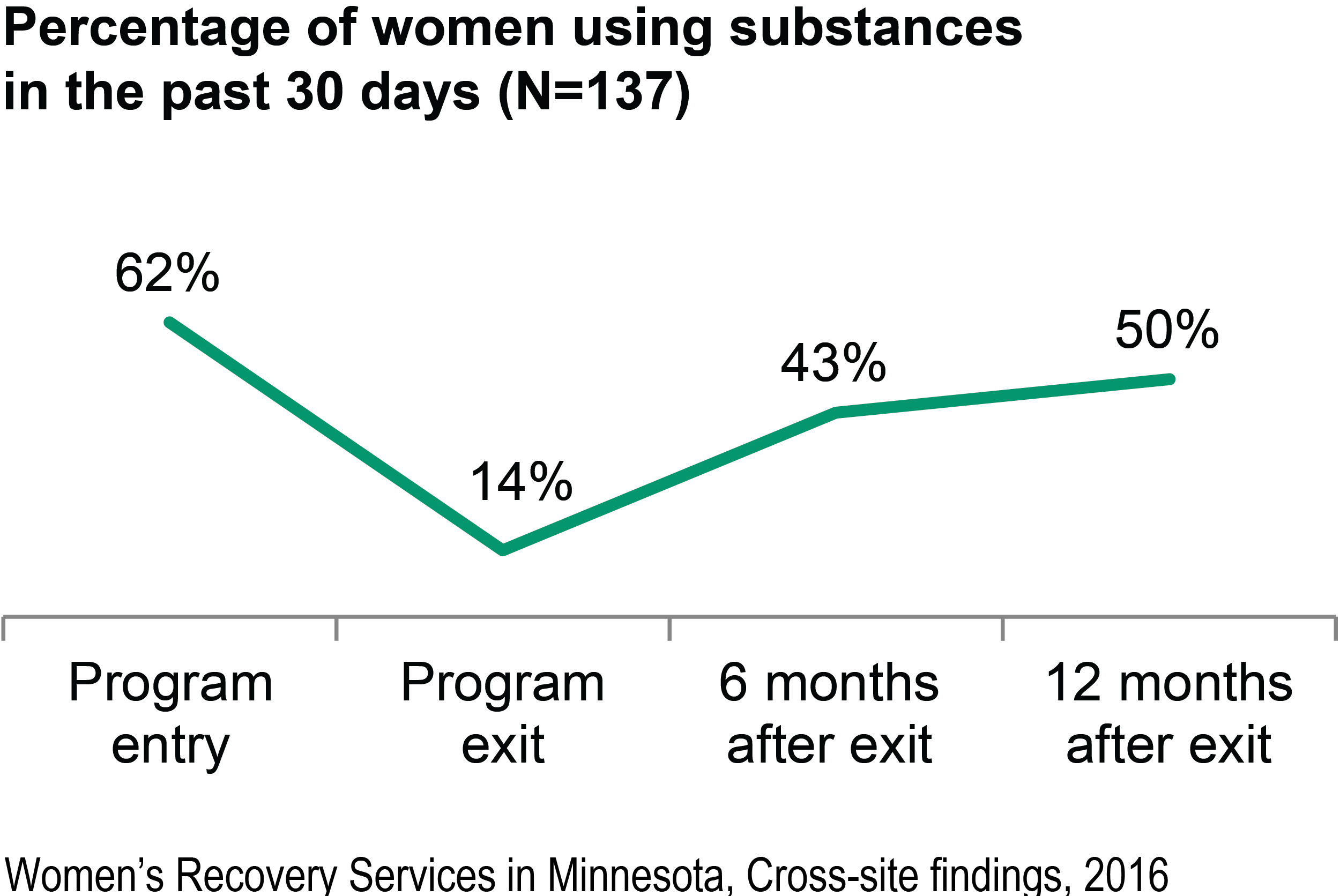What Works for Women in Recovery
Drug use, addiction, and related overdose deaths are a major concern for communities across our country. It’s difficult to read the news without hearing a story about the opioid epidemic or the resurgence of methamphetamine use, and drug use is an issue that many of us know first-hand, either personally or through friends and family with a substance use disorder.
Through our work at Wilder Research we know about the challenges and confounding factors that those struggling with addiction face, but we also know what has the potential to work in helping them succeed after their recovery program ends.
Recovery programs show positive outcomes, but maintaining sobriety is a challenge
Since 2011, Wilder has been the evaluator for the Women’s Recovery Services initiative. The Minnesota Department of Human Services oversees and funds this initiative for 11 grantee programs across the state. Grantees serve pregnant and parenting women with substance use disorders by providing recovery support and other services to women and their families.
From 2011-2016, women participating in these programs achieved a variety of positive outcomes. Most importantly, women were significantly less likely to be using substances by the time they left their program. By program exit, they were also significantly more likely to:
- Be in Alcoholics Anonymous (AA) or Narcotics Anonymous (NA)
- Be in housing that was considered stable or supportive to recovery
- Be employed
- Have medical insurance
- Have a primary care physician and/or clinic
More recent findings show the same positive trends.
However, maintaining sobriety long-term can be very difficult. While there is a significant decrease in substance use between intake and closing, these gains are largely lost one year later.

What helps women maintain their sobriety?
While we know it is difficult to maintain sobriety, we also know that there are several factors that contribute to longer-term positive outcomes for women in recovery.
1. Longer program participation and more contact with staff.
In addition to looking at the outcomes of women over time, Wilder also looked at the length and intensity of services on these outcomes. We found that women who received more services (i.e., were in the program longer had had more contact hours with program staff) did better in nearly all outcome areas, including sobriety – 80% of women in the “high intensity” group were abstinent at program closing, versus 62% in the low intensity group. An analysis of the predictive factors of long-term sobriety also showed that receiving a greater intensity of services significantly increased the likelihood of sobriety at both 6- and 12-months after program closing.
2. Good relationships with program staff.
In follow-up interviews with participants, women highlighted how crucial program staff are in their experience with a program, and ultimately their long-term well-being. When we asked women about the most important service they received, the most common answer was emotional support. In addition, two of the strongest predictors of long-term sobriety were “being engaged in case planning,” and “receiving a high dose of services,” both of which indicate that staff support are crucial.
3. Stable housing that is supportive to recovery at program closing.
Our analysis also showed that living in housing considered “supportive to recovery” at closing predicted women’s sobriety at 6 and 12 months. Other housing factors – having her own home or permanent supportive housing and living in stable housing – also predicted sobriety at 6 months after closing.
4. Access to mental health services and AA/NA.
In addition to stable and supportive housing, connection to mental health services and AA or NA also predicted long-term sobriety.
5. Their children.
Finally, having talked to over 400 women served by these programs, as well as staff at each grantee site, we know that a hugely important component of sobriety is the bond between mothers and their children. When we asked women at their 12-month follow-up interview what motivated them to stay sober, the most common answer was their children (41%).
So what?
As our communities grapple with the issues related to substance use, it is important to remember what works. Minnesota must continue to support programs that take the above factors into consideration. (The list outlined above is a start, though by no means exhaustive.)
One way in which Minnesota is already working towards improving long-term participation and contact with staff is through recent Department of Human Services’ Substance Use Disorder System Reform. A key component of this reform is the increased focus on peer support services, including making peer support a reimbursable treatment service. DHS hopes that providing longer term support beyond treatment will extend and sustain sobriety.
It is also important to create more affordable housing, as stable housing that supports women in their recovery is critical to long-term sobriety. Finally, as members of a community, we can provide a helping hand or listening ear to our neighbors in recovery. Informal supports and positive relationships really do make a difference in helping families thrive.

